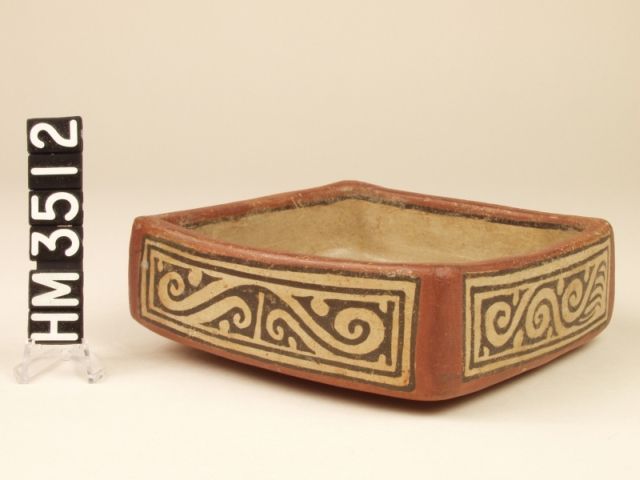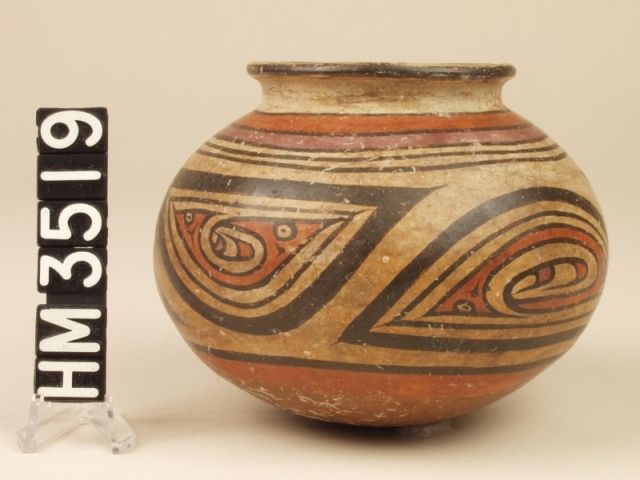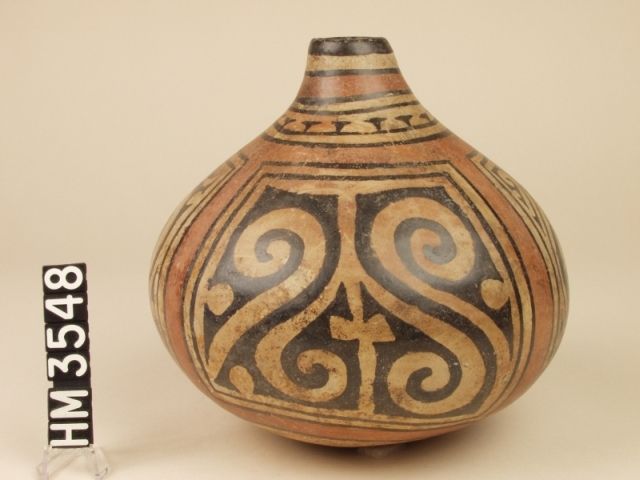Abstract Designs
Many depictions of Panamanian polychrome ceramics are abstract designs featuring curvilinear forms sometimes further divided by color contrast and sometimes revealing a small naturalistic detail, such as a claw. These designs are constructed by sophisticated manipulation of a very simple design which has been termed, for convenience, the Y-element.
The Y-element in its basic form is composed of a line with an indentation or depression at some point along its length that creates a “gap”. This indentation or “gap” essentially breaks the flow of the line and creates a unit composed of two lengths of line, or two ends, and a center (the gap). Designs are created by manipulating the character of the ends and the center in various ways.
One end line may be extended farther than the other and curved or coiled in shape (a common variation on which the term Y-element is based). Alternatively, both end lines may be turned inward to face the gap or outward to face away from it, or one end line may be turned upward and the other downward. Similarly, the gap may remain small relative to the length of end lines or be enlarged to create a gentle curve, either upward or downward, that forms the center of the design relative to the end line. Very often the design is made more sophisticated by replacing each of the end lines by a separate Y-element. The resulting designs then appear as double-ended forms connected by a generally curved line, that is, the gap or indentation is now presented as a connecting line between the two end forms.
Y-element designs very likely are rooted in, and intended to convey, basic ecological-cosmological constructions. A Y-element is, in its essence, a serpent; a length of undifferentiated curvilinear body line tapering to a head end and a tail end. As with more naturalistic depictions of serpents in Panamanian art, this simple design itself may be portrayed. However, just as the basic serpent concept is often embedded within designs of other animals composed of “appendages” added to basic serpent quality, so Y-element designs add elaboration to the basic serpent quality, so Y-element designs add elaborations to the basic serpent form to suggest depiction of other animals, as when the two end lines of a Y-element are themselves drawn as separate Y-elements. When this is done the resulting “ends” appear as profiles of animal heads (sometimes rightside up, sometimes upside down, depending on the depiction) with pointed noses and curly headcrests, the overall image appearing as a double-headed crested creature with serpentine body length. Alternatively, one Y-element end may be depicted with a curly crest while the other end lacks the curl, indicating that the design depicts a single animal composed of head and tail with connecting body line. Sometimes additional gaps appear along the length of body line suggesting the location of limbs.
Color-coding may be used to further differentiate the basic units of a Y-element design. For example, the basic serpentine body line may be depicted by one color and the Y-element head/tail ends by another, or one curly end line of a simple Y-element form may be colored differently from the nest of the design, perhaps signifying that the curly end line represents the presence of the serpent as a quality of the creature represented by the rest of the Y-element form. Sometimes the presence of another animal is indicated by turning the long curly end line of a Y-element into a claw. In more complicated designs a series of Y-element animals are positioned in the locations of ovals along an undulating length of serpent (boa) body line. This reiterates the theme of the serpent as the original source of life and the relationship between boa ovals and the concept of the fertilized egg as fundamental to origins of life.
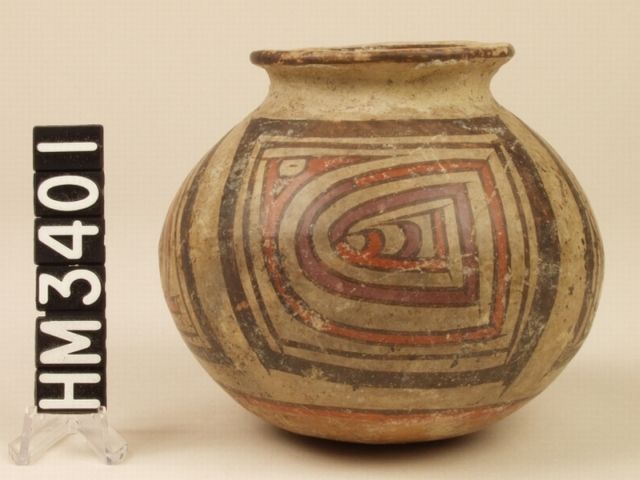
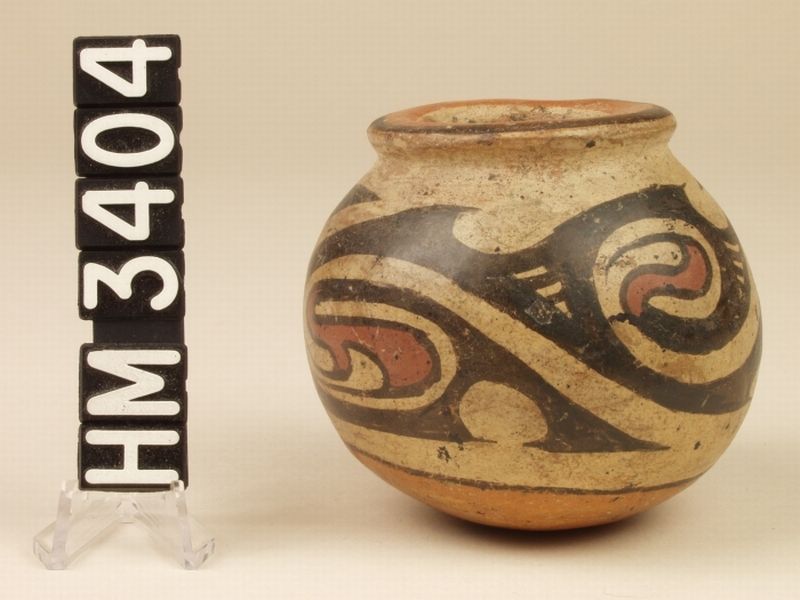
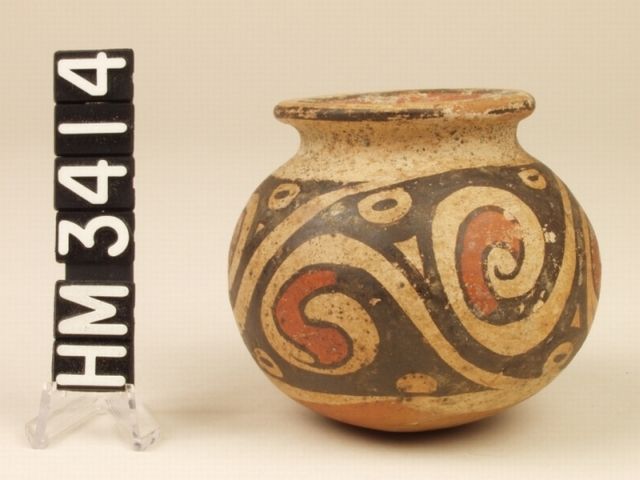
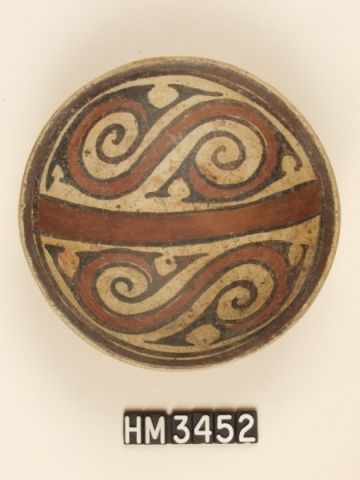
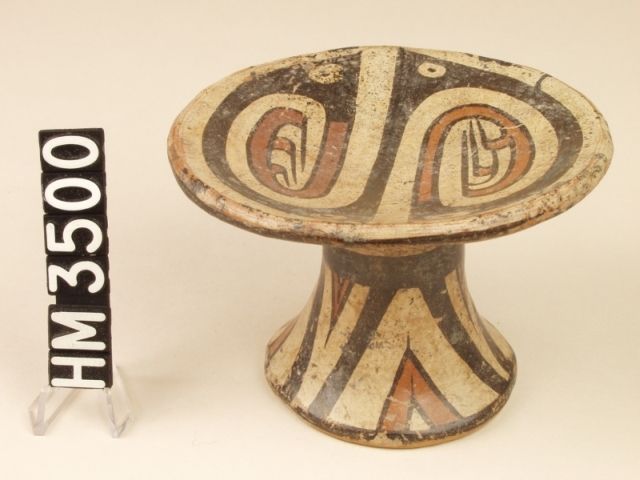
Polychrome Ceramic Pedestal Plate
A.D. 800-1000
Macaracas (Late Coclé) Period
Pica Pica Variety
